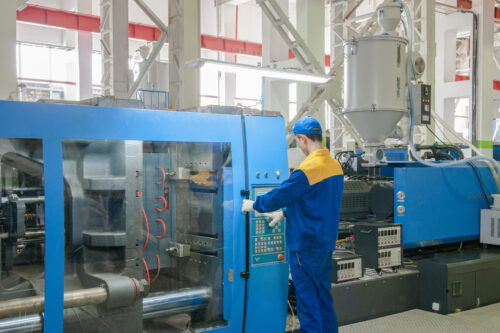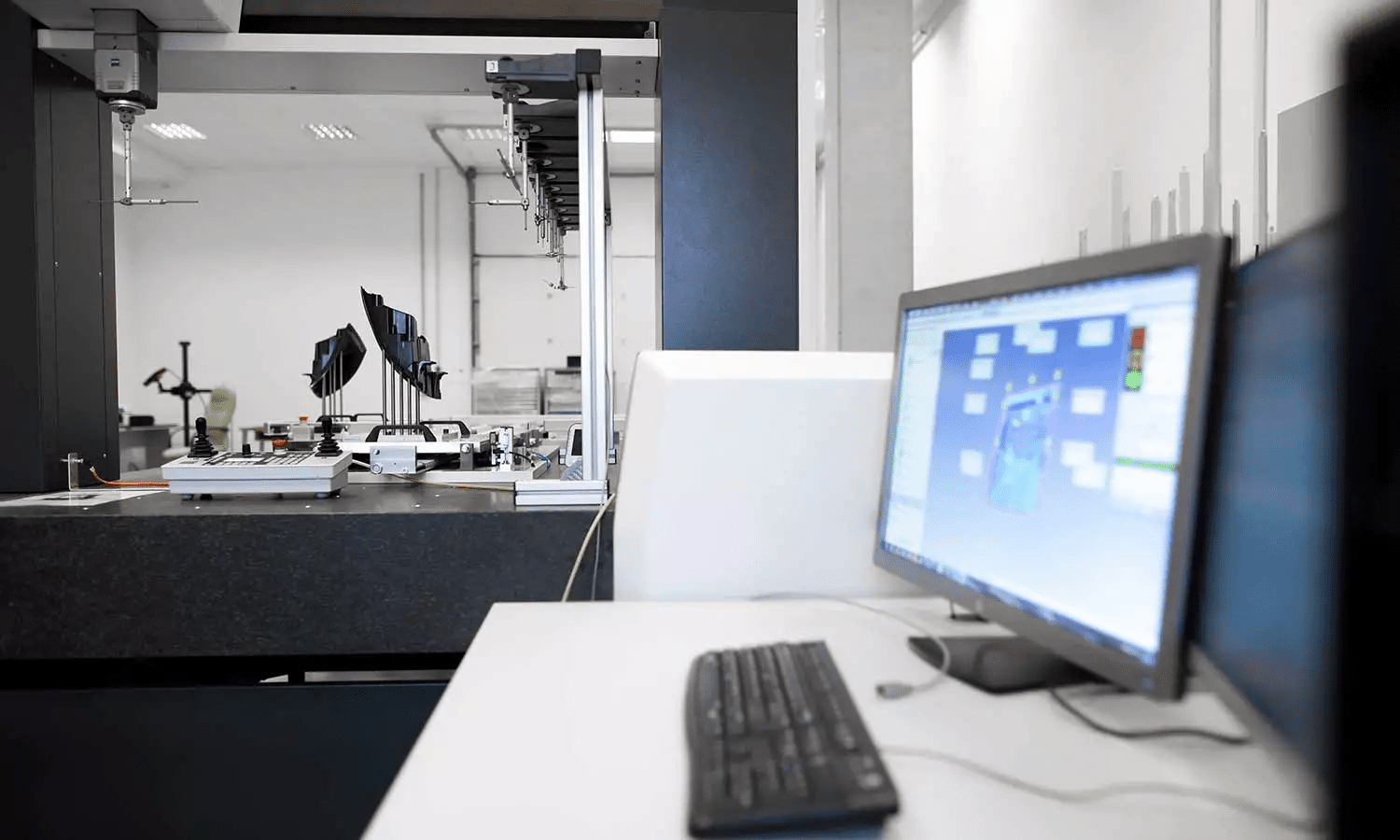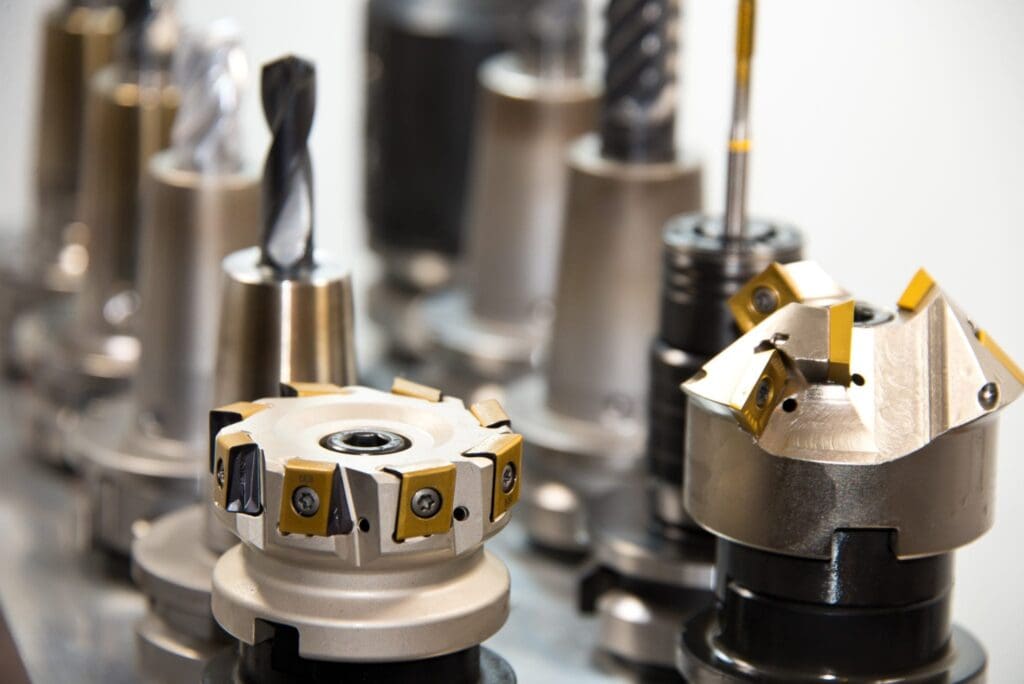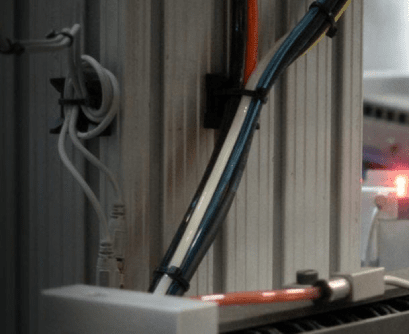Design for Manufacturability
Design for Manufacturability, or DFM, is an engineering design methodology focusing on designing products that can be quickly and inexpensively manufactured. The goal is to reduce manufacturing costs while ensuring that products meet customer requirements. DFM is especially important in the design of plastic injection molded products, as the design of the mold itself is a critical factor in determining manufacturability.
In addition, by using DFM techniques, engineers can avoid potential manufacturability problems before they occur, saving time and money in the design and development process. As a result, Design for Manufacturability is an essential tool for anyone designing plastic injection molded products.
At Nicolet Plastics, we have the experience and expertise to help you design your plastic injection molded products for manufacturability. We can work with you to ensure that your products are designed for efficient and cost-effective manufacturing.

Plastic Injection Molding Design for Manufacturability (DFM)
Design for manufacturability (DFM) is a critical early stage in the development process to ensure your part can be cost-effectively produced with repeatable quality. Beginning with understanding the parts intended use, the DFM approach requires attentiveness to all facets of part design including material section, the design of the tool, and the production process.
Injection Molding’s Importance in DFM
Design for manufacturability, or DFM, is a critical aspect of plastic injection molding. By designing products with manufacturability, you can save time and money in the manufacturing process.
There are several factors to consider when designing for manufacturability, including the type of plastic, the part geometry, and the mold design.
The type of plastic you use is essential for DFM
Some plastics are more accessible to mold than others. For example, polycarbonate is a difficult plastic to mold and requires special tooling and cooling considerations. On the other hand, polypropylene is a relatively easy plastic to mold and does not require as much specialized tooling.
The geometry of the part also affects manufacturability.
Sharp corners and intricate features can be difficult to mold, resulting in poor-quality parts. Instead, try a plastic part design with rounded corners and simpler features.
The mold design is also crucial for DFM
The shape and size of the mold cavity affect how easily the plastic can flow into the mold. If the cavity is too small or too complex, it can cause problems during the injection process. In addition, the parting line of the mold affects manufacturability. A well-designed parting line will make removing the part from the mold easier.
DFM should be considered from the very beginning of the product development process. By taking into account these factors, you can create products that are easier and cheaper to manufacture.
Effective Component Design Strategies
Describe the application
The potential environmental effects of a product should be taken into account during the product development process. This includes its intended use as well as any potential regulatory compliance issues.
Furthermore, exposure to chemicals, liquids, and temperature extremes should also be considered. Finally, aesthetics such as color and surface appearance are important factors in product development. All of these considerations are important to developing a product that will have a minimal environmental impact.
Material Selection
Choosing the right materials is vital to the product development process. Shrinkage factors differ depending on the type of material, so it’s best to set these out immediately. We’ve been working with engineering resins for years and can handle thermoplastic and thermoset polymers.
We’ll collaborate with you to select the proper materials for your product, weighing such things as strength, durability, weight, and cost into consideration. With our knowledge, we can assist you in developing a product that meets your specific demands.
Things to consider when choosing materials:
- Consider the applications and environment your team will experience.
- Make sure you are aware of any applicable regulatory requirements.
- Choose a resin appropriate for the application and meet any required performance specifications.
- If the price of branded goods is a concern, inquire about other options.
- Consider how the resin will affect maintenance intervals for the mold.
Tool Design
Regarding tool design, there are a few key things to keep in mind to minimize costs and secondary finishing steps.
- Simplify wherever possible. Eliminating unnecessary complexity will reduce the overall cost of the tool.
- Consider the product’s design for manufacturability. This includes choosing the right material for the job and designing features that can be easily produced.
- Think about how the tool will be used and how its design can facilitate it. For example, ergonomic considerations can make a tool more comfortable and easy to use, improving productivity
By keeping these things in mind during the tool design process, it is possible to create tools that are both cost-effective and easy to use.
Production Process
The production process begins with the injection molding part design. The injection molding machine melts the plastic pellets and injects them into the mold. Once the plastic has cooled, the part is ejected from the mold and sent to any secondary services.
These services are all done in-house to provide you with a high-quality product. We have a team of highly skilled engineers who are dedicated to producing efficient and cost-effective solutions for your injection molded parts.
Keys to Successful Part Design
Describe Application
Describe the environment, intended use, regulatory compliance, and important mechanical properties. Consider chemical, liquid, and temperature exposure. Determine aesthetics like color and surface appearance.
Material Selection
Materials have different shrinkage factors so it’s critical to define it at the outset. We’re experienced with engineering resins and can handle both thermoplastic and thermoset polymers.
Tool Design
This critical piece has a substantial impact on your tooling cost and piece cost. We’ll look at every option to take cost out by eliminating unnecessary complexity and reduce secondary finishing steps.
Production Process
This is where we select molding processes, automation, and any secondary services to efficiently produce and finish your part. We offer complete value-added services like machining, kitting, and assembly.
Early Design Involvement
We encourage early design consultation to optimize your design, save you money, and find ways to gain a competitive advantage for your product.
- Weight reduction opportunities
- Identify equivalent alternatives to branded materials
- Eliminating fabrication and assembly steps
- Improving strength and structure by tool design and additives
- Properly located and sized gates (impacts quality and cycle time)
- Reduce cycle time by design
- Optimize tool for uniform cooling throughout mold cavity
Customer Success Stories
- Add value by increasing efficiency
- Implement automation with fast payoff
- Simplify multi-part tool programs
Nicolet Plastics University
Proprietary Education Course
- Exclusive customer training
- Brings disciplines together for accuracy
- Injection molding technology, materials, tooling, & RFQ process
- Ensures tools are specified correctly
Ready to begin the quote process? Let's discuss your application.
Get a Quote NowOr Call Us At: 715-276-4200









